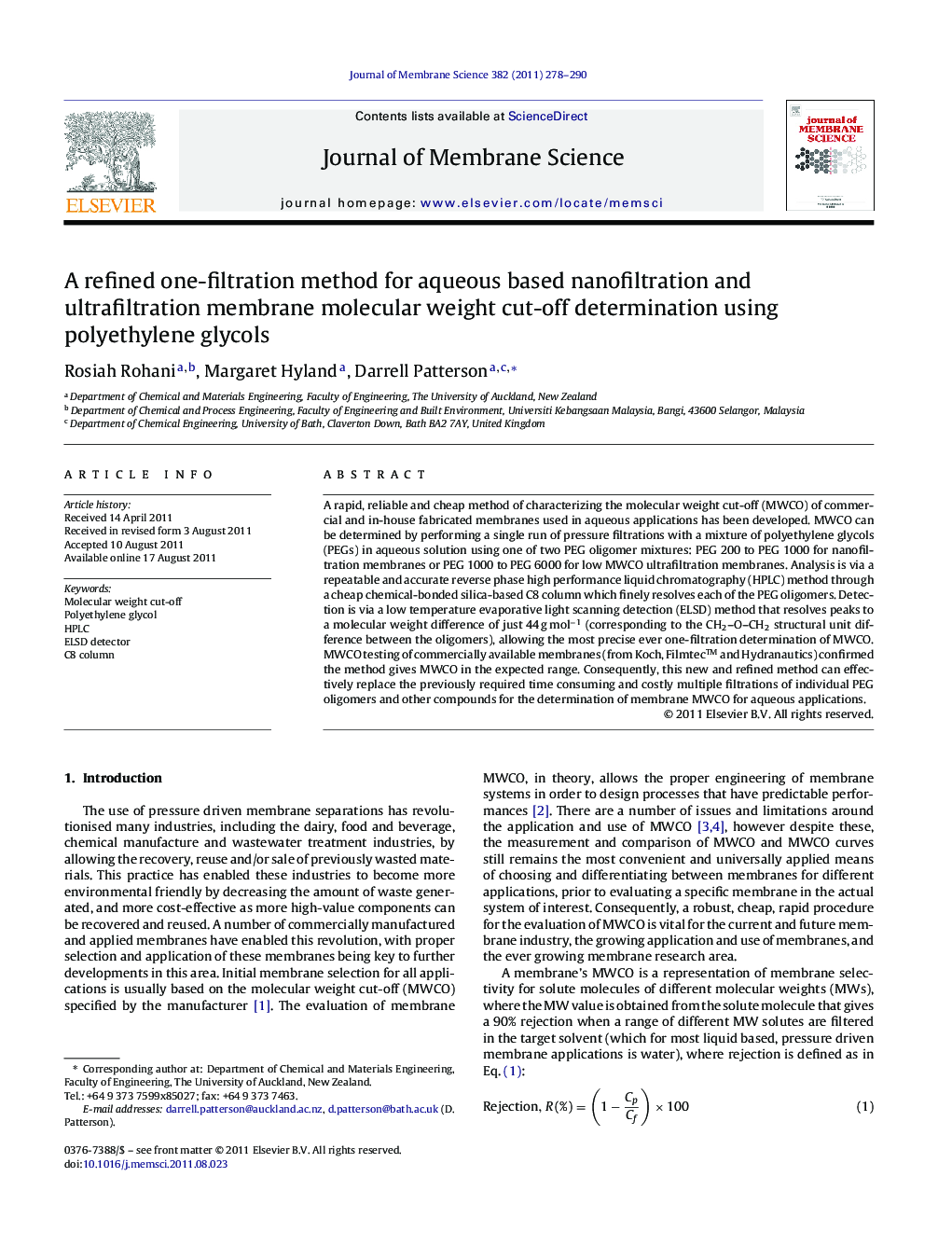| Article ID | Journal | Published Year | Pages | File Type |
|---|---|---|---|---|
| 635667 | Journal of Membrane Science | 2011 | 13 Pages |
A rapid, reliable and cheap method of characterizing the molecular weight cut-off (MWCO) of commercial and in-house fabricated membranes used in aqueous applications has been developed. MWCO can be determined by performing a single run of pressure filtrations with a mixture of polyethylene glycols (PEGs) in aqueous solution using one of two PEG oligomer mixtures: PEG 200 to PEG 1000 for nanofiltration membranes or PEG 1000 to PEG 6000 for low MWCO ultrafiltration membranes. Analysis is via a repeatable and accurate reverse phase high performance liquid chromatography (HPLC) method through a cheap chemical-bonded silica-based C8 column which finely resolves each of the PEG oligomers. Detection is via a low temperature evaporative light scanning detection (ELSD) method that resolves peaks to a molecular weight difference of just 44 g mol−1 (corresponding to the CH2–O–CH2 structural unit difference between the oligomers), allowing the most precise ever one-filtration determination of MWCO. MWCO testing of commercially available membranes (from Koch, Filmtec™ and Hydranautics) confirmed the method gives MWCO in the expected range. Consequently, this new and refined method can effectively replace the previously required time consuming and costly multiple filtrations of individual PEG oligomers and other compounds for the determination of membrane MWCO for aqueous applications.
Graphical abstractFigure optionsDownload full-size imageDownload high-quality image (260 K)Download as PowerPoint slideHighlights► One-filtration PEG based MWCO quantification for aqueous applications developed. ► Based on a high resolution reverse phase HPLC-ELSD analysis for PEG mixtures. ► Resolves MWCO within 44 g mol−1 giving the most precise ever one-filtration method. ► Produced accurate MWCO compared to manufacturers values for five commercial NF membranes.
